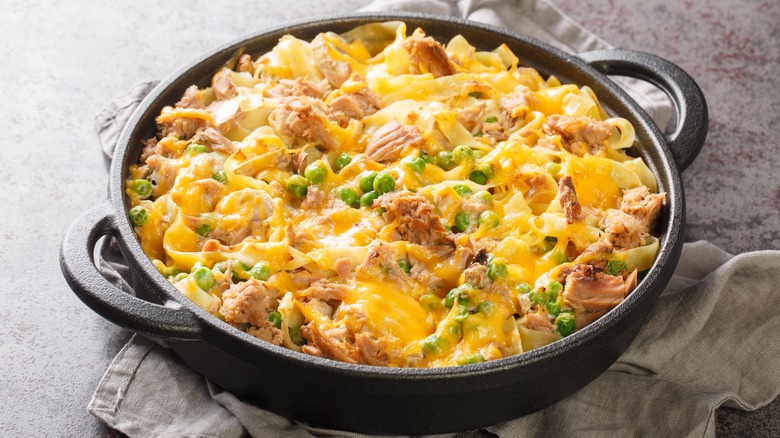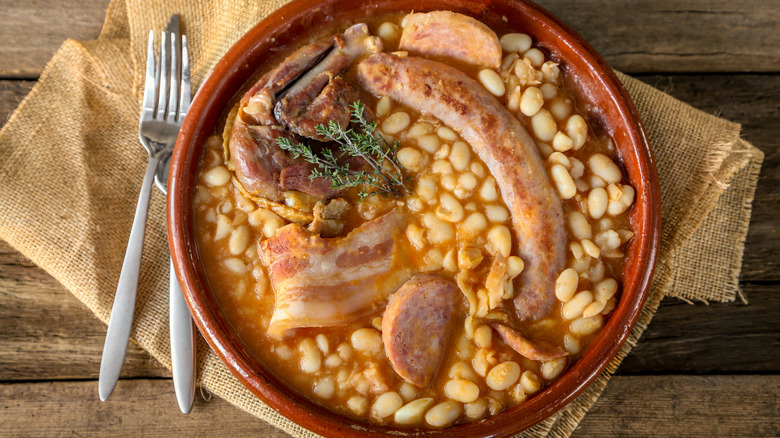The Major Difference Between Casserole And Cassoulet
The relationship between casseroles and cassoulet is a perfect example of just how varied the simplest of food traditions can become. For most Americans, a casserole is a big dish of starches, meat, vegetables, or all three, mixed with sauce or cheese, and baked together. It's the original 50s version of the one-pot meal. But even that expansive concept is just the beginning of what casseroles can be. United only by the big pans, being cooked in the oven, and the vague idea of comfort food, casseroles encompass favorites from lasagna to potatoes au gratin, in addition to newer creations like the tater tot hotdish. And that variety is what separates casseroles from cassoulet, as the former is a whole style of dish, while the latter is a specific French meal with a history dating back centuries.
Any confusion between casserole and cassoulet is surely going to originate the name, as both are derived from same French term. Casseroles, and cassoulet, come from the French name for a type of pan called a cassolo or a cassole, specifically square, earthenware dishes that were made to be baked. Although cassoulet may not fit many Americans' idea of a casserole, as it more closely resembles a stew, the fact that its collection of hearty ingredients baked together in a ceramic dish does make it part of that category. Beyond being its own meal, cassoulet is also a much more involved recipe than casseroles, which are normally valued for their ease and convenience.
Cassoulet is a casserole from Southern France
Like any rustic dish with a long history, cassoulet has variations, but the recipe at its core is a stew-like meal made from beans and fatty meat. The origin story of the dish dates to Medieval times, when villagers in the under-siege town of Castelnaudary mixed together leftover beans and meat in a giant pot to nourish themselves. Other towns also claim to be the home of cassoulet, and the "proper" meat to use ranges from pork sausage to mutton and duck or goose confit. Between soaking the beans, preparing the meat, and a long slow simmer to fully infuse the dish with flavor, cassoulet can take days to make. It's a real project meal, but one that is considered a uniquely delicious cornerstone of classic French cooking.
While one-pot meals are as old as recipes themselves, the American form of casseroles, as we think of them today, came from the development of modern cookware in the late 19th century. Home cooks at the time were looking for meals that were economical and filling, and casseroles fit the bill. The basic formula of piling filling ingredients into a dish and baking it was versatile enough to produce green bean casserole, hamburger casserole, and a million other variations. And while cassoulet isn't the same as casserole, they are united by that spirit of using what's at hand and making real comfort meals, whether you're living in suburban Minnesota or a French farmhouse.

